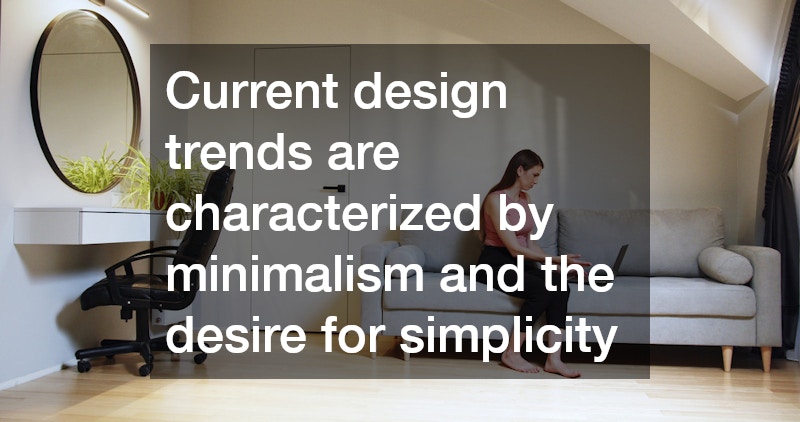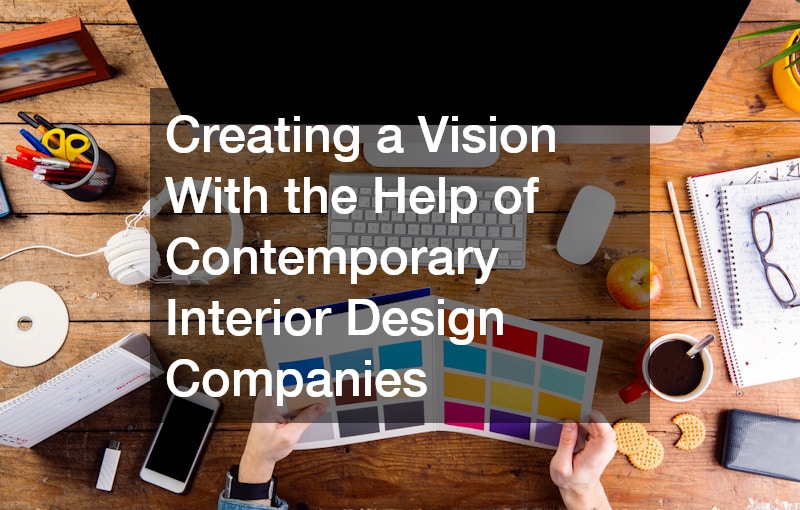In today’s fast-paced world, creating a well-designed space that reflects personal style and meets functional needs is paramount. Contemporary interior design companies play a crucial role in realizing these visions, offering innovative solutions and expertise. A well-thought-out interior design can enhance not only the aesthetic appeal of a space but also its usability and comfort.
As modern lifestyles evolve, so do the demands placed on our living and working environments. Investing in the skills of a professional interior designer ensures that you receive personalized advice that aligns with current trends and timeless elements. By collaborating with experts, individuals and businesses alike can realize their unique desires in a tailored manner.
Explore the multifaceted benefits of hiring contemporary interior design companies, the transformative potential they hold for small spaces, the latest trends influencing design today, the importance of sustainability, and the process of working with a designer. This comprehensive look highlights how these companies can bring visionary concepts to life.
Key Benefits
One of the main benefits of hiring contemporary interior design companies is the enhancement of aesthetic appeal. Designers possess the expertise and creative vision to harmonize colors, textures, and furniture styles that contribute to visually stunning interiors. Their knowledge of design principles ensures that every element works together cohesively, achieving a polished look that may be challenging for individuals to create on their own.
Another significant advantage of professional interior design is the optimization of space. Designers are skilled at assessing the unique dimensions and functionalities of a space, devising solutions that maximize both form and function. This capacity is particularly important in urban settings where square footage may be limited, enabling the creation of environments that feel spacious despite their actual size.
Furthermore, contemporary interior designers provide tailored solutions to meet individual needs and preferences. By engaging in an in-depth consultation process, they ensure that the end result reflects the client’s personality and lifestyle. This personalized touch differentiates professional design from generic decorating, resulting in spaces that are not only beautiful but also deeply meaningful to those who inhabit them.
Small Spaces
Contemporary interior design companies implement various strategies to make small spaces feel larger and more functional. One popular approach is the use of multi-functional furniture, which serves multiple purposes, thereby reducing clutter while maximizing utility. For instance, designers may recommend sofa beds or storage ottomans that both provide seating and serve as spaces for organization.
In addition to furniture solutions, designers also utilize smart layout strategies to enhance the flow within small spaces. They analyze movement patterns and adjust furniture placement accordingly, creating seamless transitions that prevent cramped feelings. The careful arrangement of elements ensures that every inch is optimized, and areas traditionally deemed underutilized are transformed into valuable living or storage spaces.
Moreover, the use of light colors and strategic lighting choices also plays a significant role in small space design. Designers often suggest light, neutral palettes that reflect natural light and create an airy ambiance. Incorporating mirrors or well-placed lighting fixtures amplifies this effect, making spaces appear more expansive while also adding layers of style and sophistication.
Today’s Trends
Current design trends are characterized by minimalism and the desire for simplicity in living spaces. Many contemporary interior designers focus on uncluttered lines and muted color schemes that emphasize functionality. This trend not only fosters a serene environment but also aligns with the growing inclination towards mindfulness and intentional living.
Incorporating sustainable materials is another significant trend shaping modern design. Designers are increasingly aware of the environmental impact of their choices and are opting for eco-friendly products that minimize harm. Reclaimed wood, recycled glass, and organic fabrics are just a few examples of materials that are now prominent in contemporary spaces, catering to the environmentally conscious consumer.
Additionally, biophilic design, which seeks to connect individuals with nature, is gaining traction. Designers are integrating natural elements such as plants, natural light, and organic shapes into their projects. This trend not only beautifies spaces but also provides psychological benefits, as studies have shown that exposure to nature can improve mood, reduce stress, and enhance overall well-being.
Project Sustainability
Interior design companies are increasingly committed to sustainability, incorporating eco-friendly practices in all stages of design. One of the fundamental approaches is the selection of sustainable materials that have a lower environmental impact during production and disposal. This might include choosing bamboo flooring, which is renewable, or organic cotton for textiles.
Moreover, many designers are focusing on energy-efficient design strategies that reduce energy consumption in homes and offices. This includes the implementation of energy-efficient lighting, appliances, and HVAC systems that minimize utility costs while promoting a more sustainable lifestyle. Clients are often educated about these options to empower them to make informed decisions.
Another aspect of sustainable design involves prioritizing local sourcing whenever possible, which significantly reduces the carbon footprint associated with transportation. Designers collaborate with local artisans and craftsmen, thereby supporting the local economy while delivering unique, customized features that embody the essence of the region’s culture. This holistic approach to design speaks to the growing importance of sustainability in contemporary practice.
By partnering with contemporary interior design companies, individuals can transform their living spaces into functional, stylish environments that perfectly reflect their unique vision and lifestyle. The expertise of professional designers opens up a world of possibilities for creating personalized spaces that are not only beautiful but also practical and sustainable. With the right guidance and resources, the journey towards an ideal living environment can be both enjoyable and inspiring, leading to outcomes that are truly transformative.


